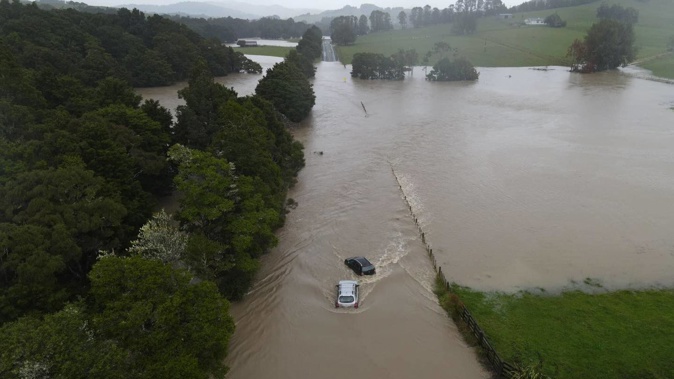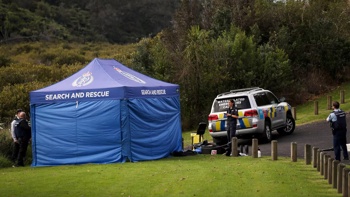
It’s been New Zealand’s hottest year in our land and seas combined, a climate scientist reports, as another major stocktake lays out the sweeping impacts global warming is already having here.
After an extreme summer that brought a series of disastrous flooding events, Niwa data showed the first six months of 2023 to be the wettest start ever seen across large parts of northern and eastern New Zealand.
That period also proved to be New Zealand’s second-warmest opening six months on the books, Niwa reported, with the national temperature coming in at 1.1C above average - behind only 2016.
With less than three months of 2023 left to go, climate scientist Professor Jim Salinger has calculated that national temperatures for the year to date - on land and in our local seas - were together tracking at the warmest on record, or 1.13C above average.
He put that down to a mix of drivers including marine heatwaves, the warm and wet signal of a La Nina climate pattern, fewer southerly systems reaching New Zealand - and background climate change.
Salinger suspected the newly-declared arrival of El Nino, which has been bringing more cooler southwesterly flows to the country, could change that trend, perhaps pulling 2023 out of its record trajectory.
Niwa meteorologist Ben Noll said that, on land, the year had brought New Zealand’s second-warmest July-to-September period, coming in at 0.95C above average - and behind only last year’s 1.01C anomaly for the same stretch.
Noll agreed that warm run might now take a cooler turn with El Nino.
From October to December in 2015 - the last time the climate pattern influenced our weather at the back end of a year - temperatures averaged 0.03C below normal.
/cloudfront-ap-southeast-2.images.arcpublishing.com/nzme/EAXH2UWLIJE5XFOFQOFWMZK4EE.jpg)
A flooded Westport in July 2021. Scientists later calculated climate change to have made the deluge that caused it about 10 per cent more intense. Photo / Samuel Smith
Even if 2023 didn’t prove another record-breaker, there’s been no shortage of others set over recent months and years - including our warmest September (2023), warmest year (2022) and consecutive record-warm winters (2020, 2021, 2022).
That might be unsurprising if we consider that seven of the eight warmest years on Niwa’s books have all occurred since 2013 - or that insurers had already chalked up another record year for extreme weather claims, even before the billions of dollars of fresh damage last summer wrought.
It’s a trend today also highlighted by the Ministry for the Environment and Stats NZ’s latest three-year update on the state of our atmosphere and climate, which showed how annual average temperatures had climbed by 1.26C over the last 114 years.
“Even minor changes in our climate can have big effects on our environment,” said Natasha Lewis, the deputy secretary of the ministry’s joint evidence, data and insights group.
“Rising temperatures have a significant effect on agriculture, energy demand, ecosystems, and recreation.”
The report pointed to a range of trends like growing seasons lengthening, frost days declining and rainfall patterns shifting across most regions, making the south gradually wetter and the north and east drier.
Droughts were becoming more common in many places, while the frequency of extreme temperature events in New Zealand had doubled because of human influence.
/cloudfront-ap-southeast-2.images.arcpublishing.com/nzme/6JUBT7HXGJH7RDNZDDG63OJUPM.jpg)
Scientists have observed dramatic declines across New Zealand's glaciers - including the Brewster (pictured). Photo / Niwa
The impacts have been wide-ranging: glaciers were in rapid retreat, marine heatwaves were causing mass bleaching events and die-offs among little penguins, and sea levels around parts of the country had risen twice as fast in the last 60 years as they did in the previous 60 years.
Around 750,000 people and 500,000 buildings - worth more than $145 billion - lay near rivers and in coastal areas already exposed to extreme flooding: and of the damage bill left Gabrielle and Auckland’s floods alone, Treasury estimated a figure ranging between $9b and $14.5b.
“Many sectors of our economy rely on natural resources such as water, which depend heavily on rainfall and temperature or are in areas that are prone to flooding,” Lewis said.
“The cost of responding to extreme weather events is likely to increase.”
One positive was that, despite an overall increase between 1990 and 2021, and increases in population and economic activity, New Zealand’s gross emissions had been relatively stable since 2006 - and actually fell in 2021.
In the bigger picture, however, the report noted it was now highly likely the world would fall short of its Paris Agreement goal of keeping global temperature rise well below the symbolic 2C threshold.
“The globe is very likely to blow through the 1.5C warming threshold, and may well go through 2C warming as well,” Victoria University climate scientist Professor James Renwick said.
“For us, that will mean more droughts, more floods, more coastal flooding, among many other impacts. Marine heatwaves that we have experienced in recent years will become the average conditions before the end of the century.”
Responding to the many sobering figures in the new report, GNS Science’s Dr Nick Craddock-Henry felt that reducing the trajectories of climate change to numbers alone overlooked the “very nature of the problem”.
“Human activity is both an underlying driver of change, and that these activities in turn will bear the brunt of the adverse effects,” Craddock-Henry said.
“In sum: Aotearoa is warming; it’s us. We are sure. It’s bad. But we can do something about it.”
While global calls for the world to rapidly decarbonise have become ever more urgent - especially after the planet just observed its hottest month in an estimated 120,000 years - here in New Zealand, some commentators have argued the climate crisis has had less prominence than it’s deserved in this year’s general election race.
Jamie Morton is a specialist in science and environmental reporting. He joined the Herald in 2011 and writes about everything from conservation and climate change to natural hazards and new technology.
Take your Radio, Podcasts and Music with you









